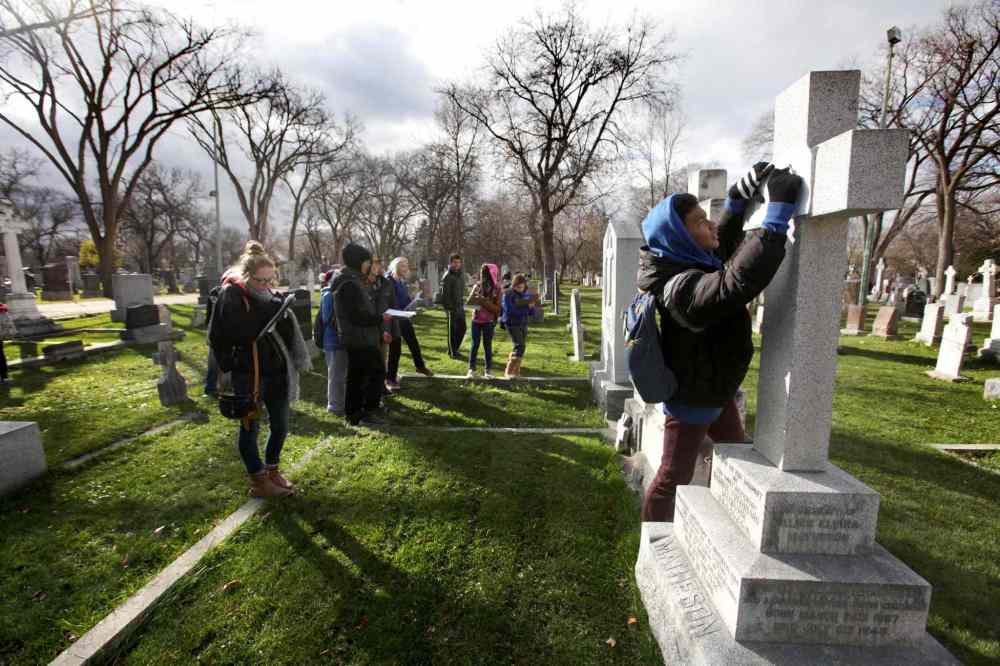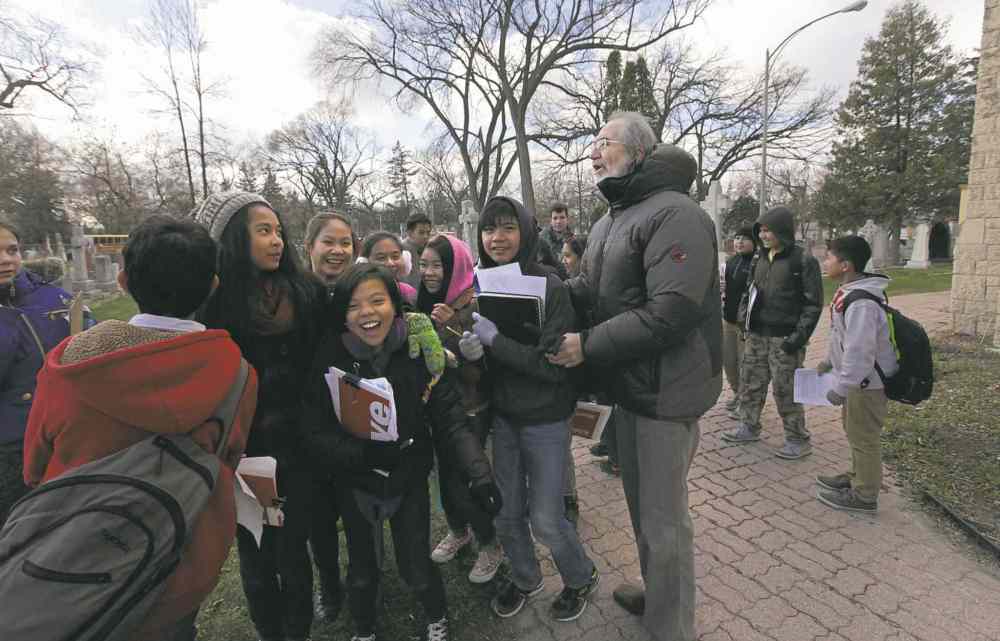Students learn about Canada’s history, people at city cemetery
Advertisement
Read this article for free:
or
Already have an account? Log in here »
To continue reading, please subscribe:
Monthly Digital Subscription
$0 for the first 4 weeks*
- Enjoy unlimited reading on winnipegfreepress.com
- Read the E-Edition, our digital replica newspaper
- Access News Break, our award-winning app
- Play interactive puzzles
*No charge for 4 weeks then price increases to the regular rate of $19.00 plus GST every four weeks. Offer available to new and qualified returning subscribers only. Cancel any time.
Monthly Digital Subscription
$4.75/week*
- Enjoy unlimited reading on winnipegfreepress.com
- Read the E-Edition, our digital replica newspaper
- Access News Break, our award-winning app
- Play interactive puzzles
*Billed as $19 plus GST every four weeks. Cancel any time.
To continue reading, please subscribe:
Add Free Press access to your Brandon Sun subscription for only an additional
$1 for the first 4 weeks*
*Your next subscription payment will increase by $1.00 and you will be charged $16.99 plus GST for four weeks. After four weeks, your payment will increase to $23.99 plus GST every four weeks.
Read unlimited articles for free today:
or
Already have an account? Log in here »
Hey there, time traveller!
This article was published 31/10/2014 (4023 days ago), so information in it may no longer be current.
Emmanuel Santiago hadn’t expected the St. John’s Anglican Cathedral Cemetery to be full of people with “foreign names.”
Such as?
“Like Archibald,” said the Grade 8 student from Andrew Mynarski VC School Thursday while taking part in Mr. Mike’s 40th annual social studies research field trip to a local cemetery that would be a perfect setting for any horror movie.

So on the eve of Halloween, on a cold, grey morning, with flakes of snow drifting down, about 100 children walked among the tombstones of people born in unfamiliar worlds who had died long before the kids were born.
There also seemed to be a lot of MacDonalds, said Camille Conti, unaware of the origins of the unfamiliar name.
“I’m trying to put in my head the shift,” laughed Mr. Mike, also known officially as teacher Iyvan Michalchyshyn.
About 90 per cent of his students come from the Philippines, including two who arrived in Canada last Friday, said Mr. Mike. He’s been taking kids to a cemetery every year to learn about Manitoba history — having spent much of his career at Gordon Bell High School — a trip that also incorporates art and language arts, and can raise some awareness leading up to Remembrance Day.
“There’s a fellow over there from Passchendaele,” Mr. Mike pointed out to several boys, scurrying among the gravestones with their notebooks and paper for a rubbing.
“They’re going to do a rubbing, which is art,” he explained. “They’ll do a bar graph of life expectancies.”
Each student had to log 50 names, noting whether they died before or after 1960. They’d later be researching those names, some recognized from the names of streets, schools and community centres in their neighbourhoods, such as Inkster and Luxton.
For children for whom Manitoba cultural heritage is an ongoing discovery, “We’re trying to get the roots,” Mr. Mike said.
Most of the students have no cultural memory of Manitoba — they know little about Canada’s wars, and it is a genuine learning experience to find out why so many of the people buried just east of Main Street were born in England, Scotland and Ireland, and how they came to live in Winnipeg.
“Most kids are quite stirred by the infants,” said Mr. Mike.
Indeed.
“Babies have died, from being only three days old,” said Matthew Tardaguila.
“Some died of diseases — I’ve seen some tombstones of kids died like one year old,” noted student researcher Lauren Manalo.

Alyzza Que knew nothing about the First World War when she arrived at school Thursday morning, before she saw the graves of a few men whose remains made it home, but appreciated immediately what it meant to her as a Canadian: “I didn’t expect that some people who had died in the past had fought for us,” Alyzza said.
“There’s lots of family names here altogether. We’re learning how names from the past connect to the church,” Maria Francesca said.
When the students are in higher grades, Mr. Mike said in response to a question, maybe they’ll have the background necessary to think about which ethno-cultural groups are buried in that cemetery and the family status required to have such magnificent gravestones.
“We’re learning how cemeteries connect history,” said student Michaela Valencia.
“I saw my own name,” said another girl. Tablang?
No, Hazel, said Hazel Tablang.
“We’re trying to learn about these people’s lives. People were born in the 1800s and died in the 1900s,” Kelly Abalus said.
“It’s history in stone,” said Mr. Mike.
nick.martin@freepress.mb.ca

Nick Martin
Former Free Press reporter Nick Martin, who wrote the monthly suspense column in the books section and was prolific in his standalone reviews of mystery/thriller novels, died Oct. 15 at age 77 while on holiday in Edinburgh, Scotland.
Our newsroom depends on a growing audience of readers to power our journalism. If you are not a paid reader, please consider becoming a subscriber.
Our newsroom depends on its audience of readers to power our journalism. Thank you for your support.
History
Updated on Friday, October 31, 2014 7:33 AM CDT: Replaces photo

